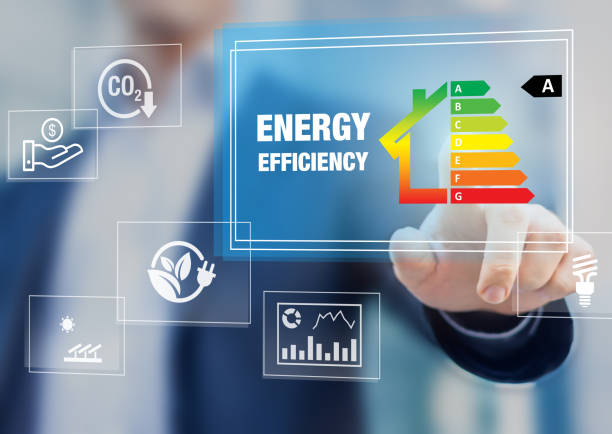When planning to get renewable energy systems for your home or business, you must analyze your current electricity usage, examine local codes and requirements, determine if you want to run the system on or off the electricity grid, and analyze the options available to you in terms of technology.
You can lower your carbon footprint, make your home or business more sustainable, and reduce your energy bills by choosing renewable energy systems for both electricity and heating.
Understanding Renewable Energy Systems

Renewable energy systems are made up of energy generated from natural resources such as water, sunlight, biomass, and wind. It is also natural for renewable energy systems to replenish themselves.
As opposed to fossil fuels like coal and oil, renewable energy systems release few or no greenhouse gases in the process of generating energy. It’s also called “green energy” or “clean energy”. Taking action against climate change requires us to shift away from traditional sources of energy and go for renewable alternatives.
There are several advantages to using renewable energy systems as sources of energy, they include:
- Lowering your electricity bill and/or fossil fuel costs by reducing energy costs
- Mitigating climate change and contributing to environmental sustainability
- Public health benefits, since they cause less pollution in the environment
- Leads to less reliance on fossils, due to the rising cost of gas, oil, and electricity
If you want to build renewable energy systems at your home or office, analyze your current electricity use (and consider energy efficiency measures to reduce it), check your local codes and requirements, decide whether you want to operate your system off the grid or on the grid and determine the technology options available to you.
Build an energy-efficient home or business space by incorporating small renewable energy systems into the whole design, an approach you can take if you intend to make a possible impact on the environment.
Considerations for Incorporating Renewable Energy into your Home or Business

Whether the building is new, renovated, or just an “add-on”, the factors will vary. A passive, green, efficient, zero-energy or even energy-plus home or office building is achieved through architectural design strategies that focuses on using renewable energy systems both in the construction and renovation.
A building’s climate control can be achieved through the use of special materials for thermal insulation including materials that generate heat when walked on and absorb heat when plaster is applied.
A passive measure for integrating renewable energy systems include:
- Lights, electrical appliances, and heating that can be controlled with home automation
- House orientation should be correct
- Windows should be installed and configured correctly
- Pergolas or awnings protect from solar radiation
When integrating renewable energy into existing buildings, the following factors are most important:
- Insulation and construction materials
- Orientation and location of the building
- Local climate
- Patterns of current consumption
- Energy sources used for controlling the climate
How to Analyze Your Electricity Loads

If you’re considering renewable energy systems for your home or business, you must first determine how much electricity you need. Examining your electricity requirements helps you determine:
- How large (and therefore how expensive) your system should be
- Variations in your energy consumption throughout the day and year
- Electricity-saving measures you can take
Load analysis involves measuring the power consumption and average daily usage for any electrical device you have plugged into a central power source, such as a refrigerator, light, television, or power tool. Electricity is used intermittently by some loads, such as refrigerators, while continuously by others, such as power tools. Installing smaller renewable energy systems may be a good option if you only use selectable loads when you have extra power.
To find out how much electricity you consume, multiply each appliance’s wattage by its usage hours (consider seasonal variations). If the wattage is not listed on the appliance, you may need to multiply the amperes by the voltage to get the wattage. Generally, an appliance’s sticker, metal plate, or cord will display power use information.
Ensure that all selectable loads are run at the same time each day. Your renewable energy system will be smaller and less expensive if you consider energy efficiency measures in your home before buying it. See energy assessments for information about determining your home’s overall energy efficiency.
10 Best ways to Power your Home with Renewable Energy Systems

1. Solar panels
When it comes to renewable energy systems, this is probably the most obvious and common method. Generally, solar panels are installed on roofs, although they can also be installed outside. It is possible to generate 10 or more watts per square foot depending on the latitude and orientation of the panels. Solar panels should be enough to power most or all of your needs if your house consumes at least a kilowatt of power.
It may also be worth investing in solar shingles if your roof is nearing its end of life. Solar shingles replace the tiles on your roof instead of having them mounted on top. Several companies, including Elon Musk’s SolarCity, already make solar shingles.
One of the main benefits of solar energy is that it allows you to generate your clean electricity to power your home or work station. As well as reducing your reliance on the grid, solar panels can also reduce your electricity bills.
2. Wind turbines
The most common place to find wind turbines is on large tracts of open land, called wind farms, or on floating platforms. For homeowners or business owners with enough land, a small wind turbine can be installed on their property to generate electricity.
Wind turbines are less popular in residential areas because of a few downsides. They are not very attractive, and some of them can be quite noisy. Additionally, you may be prohibited from building a wind turbine by local laws and zoning regulations, depending on where you live.
If your circumstances don’t allow you to suffer from these disadvantages, wind power can be excellent renewable energy systems. You can easily generate most or all of your electricity needs with a properly sized wind turbine, which is more stable than solar power. Solar panels may not be the most efficient source of renewable energy in some areas.
A sustained wind speed of at least 10 miles per hour (MPH) is generally required to generate enough power. In addition, wind speed increases energy production. When a wind blows at 12 mph, it generates about 70% more energy than when it blows at 10 mph. Turbine height also affects wind speeds. Wind turbines mounted on 100-foot towers generate 30% more power than those mounted on 60-foot towers.
3. Hydropower
Hydropower systems can generate renewable electricity off-grid for remote properties with flowing water. Turbines are installed in flowing streams. An electrical generator converts the kinetic energy of water flowing through a turbine into electricity.
There are many challenges associated with implementing hydropower at home. There are often legal and environmental concerns associated with dam construction. Energy production can also be affected by droughts. Thus, hydropower is rarely used at home. Water can be routed across the land and through a turbine on remote properties with substantial elevation drops.
Hydropower has many benefits. As opposed to solar and wind power, hydro is relatively steady and continuous. You won’t have to worry about your generator not being able to power your home as long as the water is flowing. An engineering project might be worth the peace of mind it provides.
4. Air source heat pumps
A heat pump extracts energy from the air and uses it to heat your home – similar to how a refrigerator works, but in reverse by using the heat from the air to provide you with heating and hot water. You can heat your home with a heat pump at temperatures as low as -15 degrees Celsius. They work in all temperatures and remove heat from the air.
Compared to traditional oil or gas heating, air-source heat pumps are more sustainable heating options, making your home more energy efficient and reducing your carbon footprint.
5. Solar oven
Your home may not require so much renewable energy that you’re not yet ready to invest in it. There are many reasons why solar and wind are not feasible. No problem, you can still run a solar oven part of the time.
A solar oven heats food by capturing sunlight. Using cardboard, insulation, and aluminum foil, you can make your solar oven. Electric ovens typically use quite a bit of energy, so solar ovens are a good alternative. It’s also a great way to learn about renewable energy by passively cooking food with the sun’s energy.
The advantages of a solar oven include the ability to cook food for free and its ability to work anywhere, regardless of power outages. Sunlight is all you need to avoid eating cold meals due to a lack of electricity.
6. Solar air conditioning
The idea of using the sun’s heat to cool your home might seem strange, but that’s how solar air conditioning works. In solar air conditioning, the hot water from the solar water heater is used to cool the air.
It is more energy-intensive to operate a traditional air conditioner, especially if you have central air and live in an area with high temperatures. You can save substantial amounts of money every year with solar air conditioning. It is also possible to configure many solar AC systems to heat your home and provide domestic hot water.
7. Solar water heating
There is more to solar power than just generating electricity. Sunlight can also be used to heat your home.
Water is heated by the sun and then pumped through radiators, faucets, or showerheads using solar water heaters. As opposed to solar panels, this system is much more cost-effective and easier to install than gas or electricity. Solar water heating is a good alternative to completely powering your entire house with renewable energy.
Choose a solar water heater that works for you based on its advantages and disadvantages, since there are many different options available.
8. Tesla powerwall
While technically the Powerwall (or similar large rechargeable battery) does not produce renewable energy, it can save you money regardless of whether you use another renewable energy source.
Several kilowatt-hours of electricity can be stored in the Powerwall. When electricity prices are low, it will charge from the grid, and when prices are high, it will discharge, saving you money during peak usage hours.
As a result, the Powerwall is best used in conjunction with renewable energy systems such as solar or wind. Even if the sun isn’t shining or the wind isn’t blowing, your Powerwall can store excess electricity.
You can eliminate one of the main disadvantages of renewable energy by using the Powerwall to smooth out fluctuations in your energy production. The Powerwall may also qualify for a tax credit if you connect it to the grid thanks to upcoming legislation.
9. Tubular skylights
Even though tubular skylights don’t produce electricity, they can reduce the amount of electricity you spend on lighting your home with natural light. It consists of a clear dome mounted on the roof, a metal tube, and a diffuser in the ceiling.
Located between the dome mounted on the roof and the diffuser mounted on the ceiling, the metal tube runs through them both. Approximately 90% of sunlight is reflected from the inside surface of the tube and delivered through the diffuser, which emits a soft, radiant glow of natural light.
There are many advantages to tubular skylights over traditional skylights:
- Light shafts don’t need to be built down from the roof, so they’re quicker, easier and cheaper to install
- In an attic, tube skylights can fit either into small spaces or snake around obstacles, depending on their rigidity or flexibility
However, tubular skylights aren’t functional at night, which is their downside. In some cases, manufacturers of tubular skylights offer optional light kits inside the tubes for use at night.
10. Biomass systems
In other words, biomass is made up of materials derived from living organisms. Plants, wood, and waste are the most common biomass energy sources.
Wood pellets, chips, and logs are burned in biomass heating systems to provide heat and hot water. When wood is burned in these systems, less carbon is released than when fossil fuels like coal and oil are used, as the tree absorbs only as much carbon as it emits during its growth.
Conclusion
There are many environmental benefits of renewable energy systems. As compared to traditional energy sources, they produce little or no pollution or emissions. You can contribute to reducing your carbon footprint and positively impact the environment by integrating renewable energy systems into your home energy system.
While renewable energy systems can be complex to incorporate into your home energy system, with the right tools and a little know-how, you can increase your independence and reduce your energy bills. It is a smart investment to integrate renewable energy systems into your home or office space. Investments in renewable energy often pay off over time for homeowners who plan to remain in their homes.







